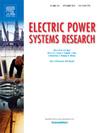A calculation method of impedance matrix for three-core submarine cables based on measurement of sequence impedance and mutual impedance parameters in multi-conductor loop
IF 3.3
3区 工程技术
Q2 ENGINEERING, ELECTRICAL & ELECTRONIC
引用次数: 0
Abstract
The three-core submarine cables have been widely used in offshore wind farm engineering as an important power transmission channel. The conventional methods for calculating the impedance matrix of submarine cables exhibits deviation between the computed and actual results. This is primarily due to their failure to fully consider the structural characteristics, specialized electromagnetic materials, and variations in burial depth of the cables. These limitations impact the accuracy of electrical characteristic calculations for submarine cables. To address factors affecting the accuracy of the impedance matrix calculations, this paper analyzes the relationship between measured sequence impedance of each metal layer and impedance matrix in three-core submarine cables. It derives equations to obtain the impedance matrix from sequence impedance. In addition, measurement methods for the sequence impedance and mutual impedance of each metal layer are provided to solve the equations. The impedance matrix of a 220 kV three-core submarine cable was calculated using the equations and the proposed measurement methods. The calculated impedance matrix is compared and analyzed against that obtained through finite element method. The results indicate that the proposed calculation and measurement approach is more effective, feasible, and with higher accuracy for the impedance matrix of laid three-core submarine cables.
求助全文
约1分钟内获得全文
求助全文
来源期刊

Electric Power Systems Research
工程技术-工程:电子与电气
CiteScore
7.50
自引率
17.90%
发文量
963
审稿时长
3.8 months
期刊介绍:
Electric Power Systems Research is an international medium for the publication of original papers concerned with the generation, transmission, distribution and utilization of electrical energy. The journal aims at presenting important results of work in this field, whether in the form of applied research, development of new procedures or components, orginal application of existing knowledge or new designapproaches. The scope of Electric Power Systems Research is broad, encompassing all aspects of electric power systems. The following list of topics is not intended to be exhaustive, but rather to indicate topics that fall within the journal purview.
• Generation techniques ranging from advances in conventional electromechanical methods, through nuclear power generation, to renewable energy generation.
• Transmission, spanning the broad area from UHV (ac and dc) to network operation and protection, line routing and design.
• Substation work: equipment design, protection and control systems.
• Distribution techniques, equipment development, and smart grids.
• The utilization area from energy efficiency to distributed load levelling techniques.
• Systems studies including control techniques, planning, optimization methods, stability, security assessment and insulation coordination.
 求助内容:
求助内容: 应助结果提醒方式:
应助结果提醒方式:


